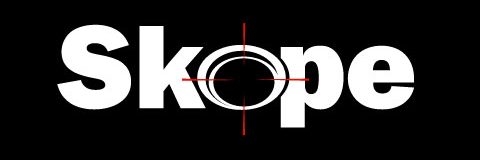Digital marketing relies heavily on search engine optimisation (SEO) for website ranking improvement, leading to natural traffic growth. Various elements make up SEO, a large field that helps websites become more visible. The distinctive operational aspects of technical SEO and on-page SEO make both essential parts of SEO, but professionals often misunderstand their differences. Understanding the separate roles of technical and on-page SEO enables the development of a successful SEO in Melbourne strategy.
What is Technical SEO?
Technical SEO aims to build infrastructure in the website backend that enhances search engine crawling and indexing ranking functions. Website architecture performance and security enhancements give search engines higher placement in search results. The development process focuses on creating a technically optimised website that search engines and users can easily use.
Website speed optimisation stands as a fundamental element that constitutes technical SEO. Websites that load rapidly are given preference by search engines since they provide a terrible user experience. Standard techniques to improve website speed include content delivery networks (CDNs), browser caching, and image optimisation.
Mobile Friendliness
The mobile-first indexing policy by Google demands that websites work properly across different platforms to maintain ideal rankings. A lower Google ranking may force websites to operate difficult-to-use interfaces on mobile platforms. Technical SEO requires responsive design implementation and mobile usability optimisation.
Technical SEO
The search engine utilises bots or crawlers to index web pages while moving through them for practical search relevance assessment. Web crawler effectiveness depends on websites that use proper logical organisation structures. Search engines can better determine which pages to crawl and index using XML sitemaps, appropriate URL structures, and an optimised robots.txt file.
HTTP
Using HTTPS encryption improves website security, which Google uses to determine rankings. SSL certificates are essential since a secure website increases confidence with users and search engines.
Schema Markup
It is the other name for structured data and is crucial to technical SEO in Melbourne – https://www.makemywebsite.com.au/seo/melbourne/ . Rich results in search engine listings are made possible by giving search engines more context about the content on a website. Both click-through rates and search visibility may increase as a result.
To guarantee seamless navigation, technical SEO also entails repairing broken links, enhancing website architecture, and optimising server response times. Better search performance is the final result of these backend changes, which aid search engines in comprehending and ranking web content more effectively.
What is On-Page SEO?
Conversely, on-page SEO improves the relevance and usability of individual web pages for search engines and people. Increasing a page’s quality includes content optimisation, keyword placement, and HTML tag enhancements.
Content optimisation is a crucial component of on-page SEO. Search engines give high-quality, pertinent, and interesting material that benefits consumers priority. This entails keeping the text readable, organically utilising the goal keywords, and organising the content to improve the user experience.
Title Tag
Title tags and meta descriptions serve as fundamental components that build up on-page SEO effectiveness. A title tag is an essential on-page ranking element because it displays content information to users and search engines. The title tag for search results needs a proper keyword introduction and a character count following the protocols for truncation prevention. A well-written meta-description leads users to click pages by providing an authentic overview of what is contained within.
Headers
Logical text structure and quality readability emerge from using H1, H2, and H3 header tags. Search engines receive clear information hierarchies from headers, which enhances their ability to understand page structures. When header tags are used correctly, they improve user experience and SEO in Melbourne.
Internal Linking
Linking to other pertinent pages on the same website facilitates user navigation and helps disseminate page authority. Additionally, it makes it possible for search engines to find fresh information and comprehend how various pages relate.
Image Optimisation
One frequently disregarded component of on-page SEO is image optimisation. Large, poorly optimised photos might cause a website to load slowly, hurting search engine rankings and user experience. Enhancing accessibility and page load speed can be achieved by choosing suitable file formats, compressing images, and using descriptive alt language.
URL Structure
Complete SEO-friendly URLs must contain short textual addresses together with essential search terms. Short URLs without unnecessary components assist search engines and users in identifying page purposes easily. The length of user visits and the number of page bounces alongside click-through activities impact search engine optimisation performance on specific pages.
A site receives better search engine rankings when content allows users to stay engaged while fostering interaction and decreasing site abandonment rates.
Key Distinctions Between On-Page SEO and Technical SEO
- Although they both improve a website’s performance, technical SEO and on-page SEO focus on different facets of optimisation. The website’s infrastructure, which ensures that search engines can effectively crawl and index material, is the focus of technical SEO.
- Conversely, on-page SEO is focused on user experience and content. Increasing relevance and engagement entails improving content, photos, metadata, and other on-page components.
- On-page SEO necessitates constant changes, whereas technical SEO in Melbourne is frequently a one-time or infrequent activity. Only sporadic upkeep is required if a website’s technological core is optimised.
Why Are Both Essential for SEO Success?
- For a website to succeed, technical SEO and on-page SEO must be balanced.
- Even the best material may not be indexed by search engines due to technical difficulties.
- A website that loads quickly and is well-structured improves user experience and search engine rankings.
- High-quality, well-optimised material guarantees engagement and relevancy.
- Visibility, traffic, and retention are all increased by a comprehensive SEO approach.
Wrap Up
Website owners may build a strong SEO foundation that increases organic traffic and search engine rankings by spending money on technical adjustments and on-page enhancements. Long-term digital success will result from a strategic approach that balances these two factors.
